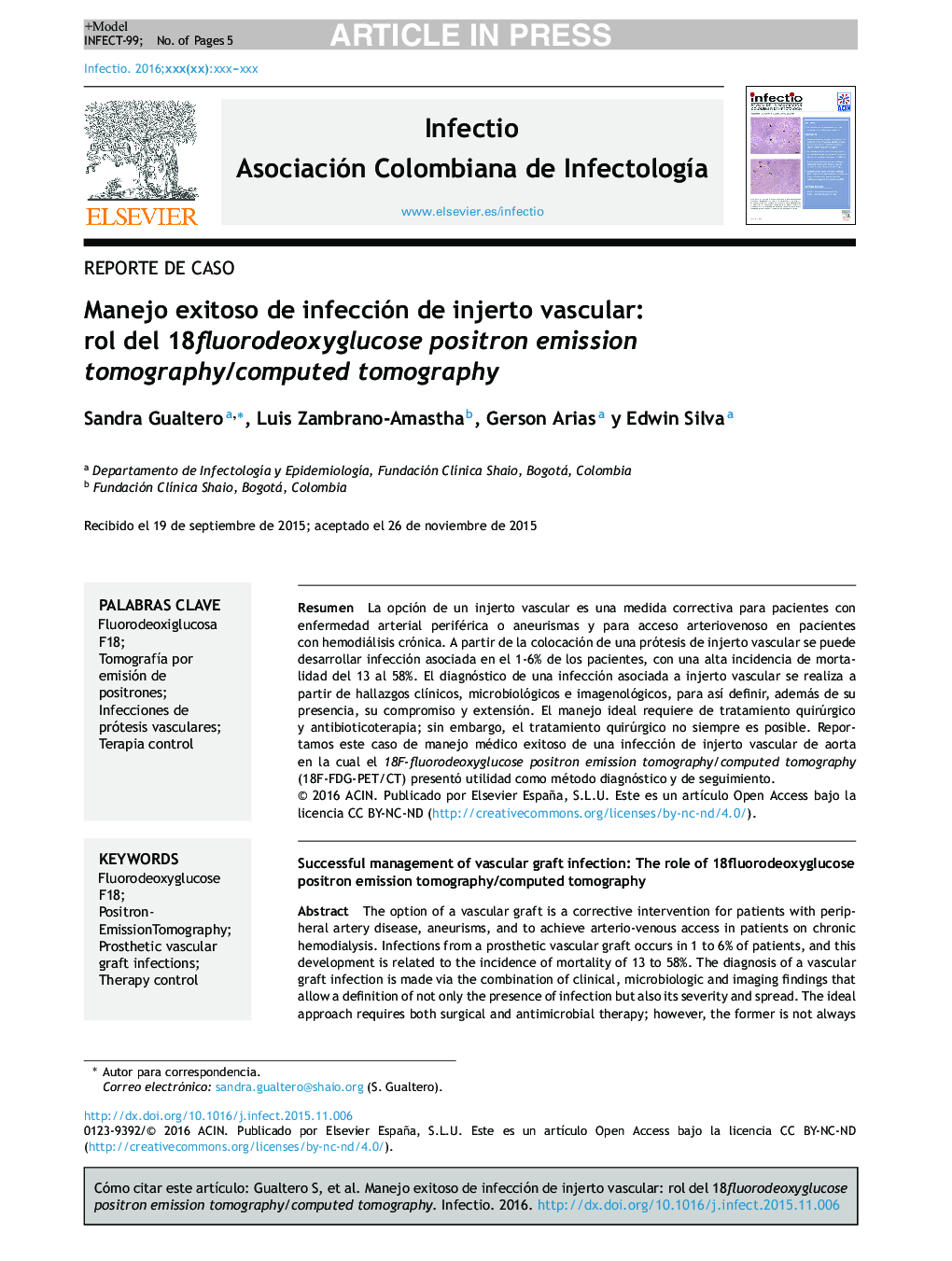| Article ID | Journal | Published Year | Pages | File Type |
|---|---|---|---|---|
| 8745881 | Infectio | 2016 | 5 Pages |
Abstract
The option of a vascular graft is a corrective intervention for patients with peripheral artery disease, aneurisms, and to achieve arterio-venous access in patients on chronic hemodialysis. Infections from a prosthetic vascular graft occurs in 1 to 6% of patients, and this development is related to the incidence of mortality of 13 to 58%. The diagnosis of a vascular graft infection is made via the combination of clinical, microbiologic and imaging findings that allow a definition of not only the presence of infection but also its severity and spread. The ideal approach requires both surgical and antimicrobial therapy; however, the former is not always possible. We report a case of successful medical management of an aortic vascular graft infection and the usefulness of a 18F-fluorodeoxyglucose positron emission tomography/computed tomography (18F-FDG-PET/CT) scan as a tool for diagnosis and follow-up.
Related Topics
Life Sciences
Immunology and Microbiology
Immunology and Microbiology (General)
Authors
Sandra Gualtero, Luis Zambrano-Amastha, Gerson Arias, Edwin Silva,
